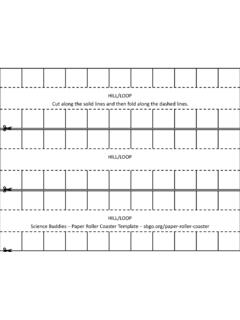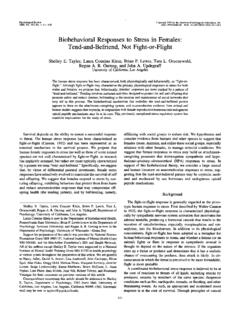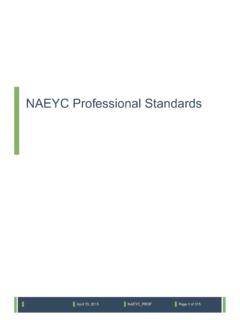Transcription of A Guide to Planning a Science Fair - University of New Mexico
1 A Guide to Planning a Science Fair Proudly presented by Science buddies : Providing free Science fair project ideas, answers, and tools for serious students. Visit us online at Page 1 of 25 February 15, 2008 Copyright 2008 Kenneth Lafferty Hess Family Charitable Foundation. All rights reserved. You may print and distribute up to 200 copies of this document annually, at no charge, for personal and classroom educational use. When printing this document, you may NOT modify it in any way.
2 For any other use, please contact Science buddies . Visit us at Page 2 of 25 February 15, 2008 Copyright 2008 Kenneth Lafferty Hess Family Charitable Foundation. All rights reserved. Table of Contents 3 Audience for This Guide ..3 Science Fair Planner .. 4 Before You Kick Off Your Science Fair 4 Step 1: Set goals for the Science fair.. 4 Step 2: Set the date and place for the Science fair.. 4 Two Months Before the Fair ..5 Step 1: Determine a schedule for the fair.. 5 Step 2: Plan Science fair location details.
3 6 Step 3: Identify the type and number of volunteers 6 Step 4: Recruit 9 Optional: Participating in Upper-level Fairs .. 10 One Month Before the Fair .. 11 Step 1: Invite visitors to the Step 2: Schedule volunteers.. 13 Step 3: Decide on awards categories and 13 Step 4: Set up a registration system and organize 14 Step 5: Gather supplies..14 Step 6: Send a reminder to parents and students.. 15 The Day of the Fair .. 15 Step 1: Set up the room..15 Step 2: Conduct orientation for 16 Step 3: The Fair Begins.
4 16 A. Register participants as they 16 B: Set up display 16 Step 4: Judging .. 16 A. Conduct judging and support judging.. 16 B: Monitor the event.. 17 C: Make sure that all students receive many project visitors.. 17 Step 5: 17 A. Complete certificates (optional).. 17 B: Tabulate scores and determine winners.. 17 C: Distribute awards.. 17 Step 6: Return the room to normal.. 18 Program Follow-up .. 18 Send thank you notes to volunteers.. 18 Publicize the winners.. 18 Assist select students to go on to other fairs.
5 18 Evaluate your Let Science buddies know about your experience.. 19 Appendix: Printable Worksheets & Resources .. 20 Works 25 Page 3 of 25 February 15, 2008 Copyright 2008 Kenneth Lafferty Hess Family Charitable Foundation. All rights reserved. Introduction Science fairs provide innumerable benefits to students, which encourage their educational and even social development. Perhaps one of the most valuable benefits is the chance to show, explain, and talk about their projects to others. It s rewarding for fellow students, parents, teachers, and community members to have an opportunity to see and appreciate their many weeks of hard work.
6 Because Science fairs also offer judging, students are motivated to strive for excellence and understand what worked well in their projects and where they can improve. Science fair participants are able to: Create their own learning experiences and innovations, just as scientists do in the real world. Design display boards to communicate the stories of their Science projects. Participate as a community and support and encourage their fellow students at the fair. Learn from other students.
7 Interact with adults and improve presentation skills by answering questions from visitors. About this Guide Science buddies strongly believes in the advantages of Science fairs, which is why we created this Guide as a starting point to help you arrange a Science fair at your school. Science buddies is a nonprofit organization that provides free Science fair project ideas, answers, and tools for teachers and students in grades K-12. The goal of this Guide is to give you tools to overcome some common Science fair challenges.
8 Challenge How this Guide Provides a Solution The time it takes to plan a fair Clear and easy steps that focus on how the fair can benefit the students the most Using volunteers effectively Advice on determining how many volunteers you will need Recruiting and scheduling tools and ideas A judging Guide and scorecard that are comprehensive enough to turn volunteers who possess a basic Science or technical background into competent project judges Promoting the fair to achieve the fair's core purpose: a venue for sharing scientific work Tested ideas to attract the school community Other Essential, Supporting Materials This Guide focuses on guidelines and details for holding a Science fair.
9 See the Teacher Resources page ( ) of the Science buddies website for other essential information for guiding students in doing their projects, including assignments and student worksheets. The Teacher Resources page also includes a Guide for parents on how to help without interfering. Audience for This Guide This Guide is aimed at a teacher who: Has never run a Science fair or is looking for ideas to enhance a basic fair. Teaches any grade, but especially upper elementary and middle school grades.
10 Science Fair Planner Follow the step-by-step directions below to organize a terrific, well-attended Science fair with the help of effective volunteers. Before You Kick Off Your Science Fair Program Step 1: Set goals for the Science fair. Set goals for your program. Here are some suggestions: Make the experience positive for each student; every student should come away with a sense of accomplishment. To meet this goal, it is imperative to break the project down into manageable chunks, each of which is graded and provides an opportunity for you to offer support.







